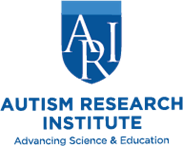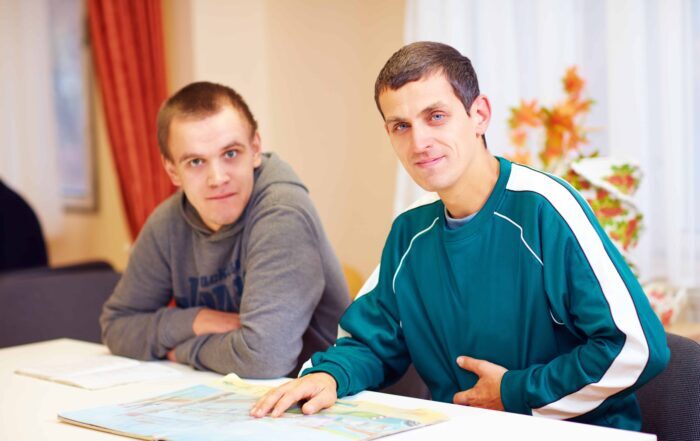Wenn Lawson, Ph.D., dives into aging and the autism spectrum. Speaking from personal and professional experiences, he discusses memory, movement, sensory profiling, language, and autonomy as they pertain to adults with autism. The presenter details differences in aging compared to the non-autistic population and highlights the need for universal accommodations within communities and homes. Lawson underscores the usefulness of technology in socializing and provides suggestions on how to accommodate aging with autism in daily life.
Learn more about our speaker, Wenn Lawson, Ph.D., HERE
Free certificates of participation are available upon successful completion of a brief knowledge quiz HERE
In this webinar:
1:30 – Introduction
5:25 – Autistic characteristics in adults vs children
9:12 – Memory
11:00 – Key point: Language and communication
12:30 – Implications for memory
14:31 – Interoception
15:25 – Object permanence
15:40 – How to build new memories
17:55 – Autonomy
19:22 – Language ease
20:43 – Interoceptive movement
22:41 – Motor motivation
24:05 – Sensory profiling
26:02 – Example: Sensory issues
27:18 – Sensory accommodation
28:32 – Appropriate age expectations
30:14 – Universal design and interdependence
32:55 – When parents or caregivers leave
36:53 – How to create accommodations for aging in your life
39:06 – The art of communication
41:25 – Resource list
43:25 – Q & A
Lawson shares personal experiences as an adult with autism and describes how skewed perceptions of himself and his abilities have affected his life (1:30). He provides key differences between children and adults with autism (5:25), highlighting the lack of focus on adult diagnosis and treatment (5:00). The presenter discusses five critical insights about aging with autism:
1. Memory
Lawson explains how the literality (seeing things in black & white terms) of autistic thought processes influences memory across time and its subsequent effects on the need for sameness and resistance to change (9:12). The presenter notes that brain plasticity decreases less with age in autistic adults compared to their non-autistic peers. Due to higher brain plasticity, Lawson states that autistic adults are more likely to read facial expressions but forget short-term projects and commitments (10:00). He explains how an inability to forget long-term routines or schedules can make change feel terminal and scary. Lawson recounts the day a friend helped him realize that people are allowed to change their minds and notes the importance of purposeful terminology in building understanding and adaptations to changes (12:30).
2. Movement and mobility
The speaker describes interoceptive senses that keep track of physical characteristics like hunger, thirst, anxiety, and bladder and bowel connections (14:31). He underscores the importance of learning these connections and the positive effects they have on mental health, catatonia (22:15), and brain connectivity (20:43). Lawson also notes that mobility for autistic seniors is often overlooked. Many adults with autism are not as socially equipped as non-autistic individuals and lack motivation to get involved in their communities (17:55). The presenter suggests discovering and using individualized means for motivation (23:00) to build connections with self and with a community (18:34).
3. Sensory profiling
Lawson discusses sensory capacity fluctuation across daily activities and the lifetime. Many adults with autism avoid social settings due to sensory limits and lack of sensory accommodations outside their homes (31:15). The speaker discusses sensory-friendly activities such as sensory movie theaters and sensory shopping hours. Although these can help, he states, it is more important to find ways to accommodate sensory needs instead of separating the community (25:10). He notes that he is not disabled in his world, only in the world outside (32:01). Lawson details universal design (31:15) and relates wheelchair accommodations to how we must accommodate autistic adults moving forward (26:06).
“Having sensory issues understood and accommodated would make a world of difference to so many of us. I think it’s better to get used to seeing us using the things that help us accommodate to various settings, rather than create settings that are devoid of sensory stimuli [where] everyone treads lightly around us.” (27:18)
4. Language
The nature of autism, Lawson relays, dictates difficulties connecting thoughts and feelings in ways that allow sufficient “processing time” to maintain conversation speed and expression (11:32). As individuals age, the want for social connection often increases. However, many autistic adults avoid big groups and struggle to socialize due to communication difficulties. Therefore, the speaker asserts that we need to find and use communication techniques that assist autistic adults with social connection (19:22). Lawson underscores that just because an individual may not speak does not mean they cannot communicate well (11:00). He also highlights the need for communication studies and treatments in older populations (12:00).
5. Autonomy
The presenter describes autonomy as freedom from external control or influence. Autonomy leads to independence, which in turn leads to interdependence, or knowing how to request help, where to go, and how to use it (30:14). While autonomy may be the usual outcome of aging for the non-autistic population, it is not always the case in autism (17:55). Therefore, Lawson asserts that we must learn what autonomy looks like in autism and we should create tools for building autonomy that can be used by more of the population (18:25).
Throughout the presentation, Lawson speaks to the importance of technology as a tool for building communication skills and connections to social understandings (16:10). The most important aspect of aging in autism, Lawson posits, is a community that is trained and understands autism (35:08). Personalities can impact social structures (32:55), and retirement is a massive change to routine and lifestyle (34:14), so it is imperative to have a community that cares. Lawson provides a list of questions for viewers that can help with aging and designing accommodations in their life and community (36:53). He also discusses the art of communication and provides unique topics to help with personal understanding and connection to aging (39:06). The speaker provides a resource list (41:25) before the question and answer session (43:25).
Published: 01/04/2019
 Psychologist, lecturer and author, Wenn Lawson, Ph.D. has run his own business for 22 yrs. At 2 yrs, he was misdiagnosed as intellectually disabled, at school of being incapable of doing as he was told, at 17 yrs misdiagnosed with schizophrenia; in and out of Mental Health Institutions; eventually age 42yrs, diagnosed with an autism spectrum condition (ASC), ADHD, dyspraxia and learning difficulties. Dr. Lawson is currently a Teaching Fellow with Birmingham University’s online Masters autism course. He resides on the Autism Open Access board and the board for SEAL(Community College in Warrnambool, Australia), & the ICAN board, South West (Australia). He is participant and advisor for Autism CRC, Australia and he has written numerous books (and papers) on ASC.
Psychologist, lecturer and author, Wenn Lawson, Ph.D. has run his own business for 22 yrs. At 2 yrs, he was misdiagnosed as intellectually disabled, at school of being incapable of doing as he was told, at 17 yrs misdiagnosed with schizophrenia; in and out of Mental Health Institutions; eventually age 42yrs, diagnosed with an autism spectrum condition (ASC), ADHD, dyspraxia and learning difficulties. Dr. Lawson is currently a Teaching Fellow with Birmingham University’s online Masters autism course. He resides on the Autism Open Access board and the board for SEAL(Community College in Warrnambool, Australia), & the ICAN board, South West (Australia). He is participant and advisor for Autism CRC, Australia and he has written numerous books (and papers) on ASC.
From Special to H.A.P.P.Y.
Peter Vermeulen, Ph.D., considers a positive approach to psychoeducation for autistic individuals. He draws on over 25 years of experience to illustrate contemporary changes in autism intervention focus and discourse. The speaker
Examining the Transition to Adulthood in Autism: Challenges and Opportunities in the Aim of Thriving
David B. Nicholas, Ph.D., examines the transition to adulthood and its implications for autistic individuals. He presents the ecosystem mentality and discusses recent findings supporting a holistic and future-oriented
Transitions from Pediatric to Adult Medical Care
Julie Corder, CNP, and Carrie Cuomo, DNP, CPNP, with the Cleveland Clinic Learning Hospital, discuss the critical stages of transition from pediatric to adult healthcare for individuals with complex medical needs. They
Back-to-School Resources
Whether you’re a parent preparing a child for grade school or an adult transitioning into or out of college, the back-to-school season can present unique challenges for families and individuals with autism.
LGBTQIA+ and Autism
Contemporary research on the intersection of autism, sexuality, and gender identity asserts that autistic individuals are more likely to identify as LGBTQIA+ than the neurotypical population. Similarly, the prevalence of autism is
Transportation issues rarely addressed by providers
Very few medical or behavioral specialists discuss driving or other transportation-related issues with patients who have ASD (autism spectrum disorders), according to a new study. Emma Sartin and colleagues surveyed 78







